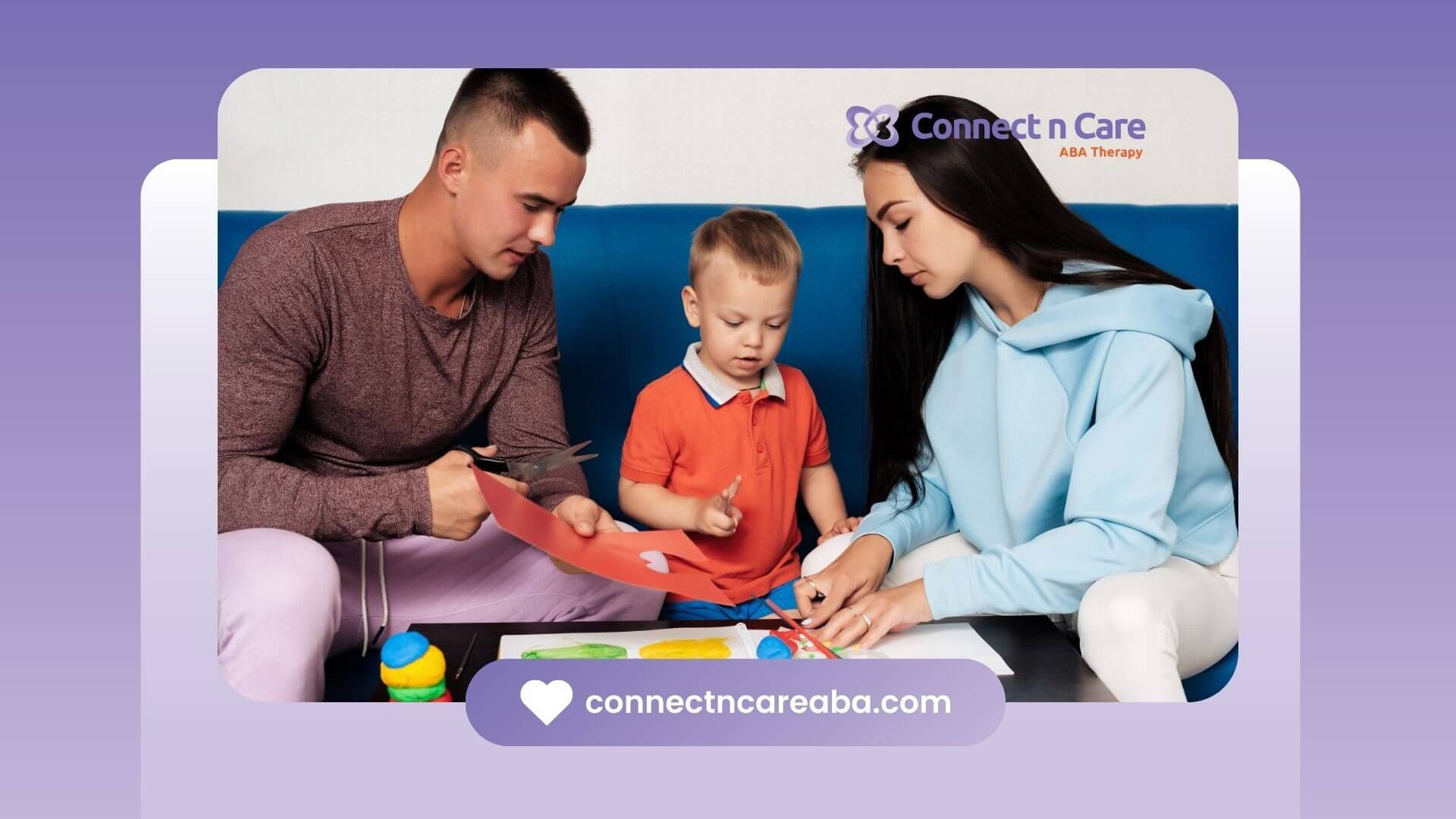What is Autism Spectrum Disorder?
Autism Spectrum Disorder (ASD) is a neurological and developmental disorder that impacts how individuals interact with others, communicate, learn, and behave. Symptoms typically appear within the first two years of life, making it a developmental disorder.
ASD is characterized by a wide range of symptoms and severity levels, which is why it is classified as a "spectrum" disorder. This means that individuals with ASD can experience varying degrees of challenges and strengths. For a more detailed exploration of the varying degrees of autism, refer to our article on autism spectrum levels.
| Key Characteristics of ASD |
|---|
| Neurological and developmental disorder |
| Symptoms appear in early childhood |
| Wide variation in symptoms and severity |
Symptoms and Diagnosis of ASD
The symptoms of Autism Spectrum Disorder can vary significantly from one individual to another. Common symptoms include difficulties in social interactions, challenges in communication, and repetitive behaviors. Diagnosing ASD involves evaluating a person’s behavior and development. Health care providers can typically make a reliable diagnosis by the age of two.
Early diagnosis is crucial, as it enables timely initiation of treatments and services. According to the Centers for Disease Control and Prevention (CDC), approximately 1 in 54 children is diagnosed with autism. While signs of autism are often visible in early childhood, many individuals may not receive a formal diagnosis until adulthood.
| Diagnosis Timeline |
|---|
| Noticeable symptoms typically by age 2 |
| Reliable diagnosis possible by age 2 |
| Some individuals diagnosed in adulthood |
Understanding the levels of autism spectrum disorder can aid families and individuals in navigating the challenges associated with ASD. For further insights into specific levels, explore our sections on mild autism and severe autism.
Levels of Autism Spectrum Disorder
Understanding the different levels of Autism Spectrum Disorder (ASD) is essential for individuals and families navigating the spectrum. The levels of autism spectrum disorder reflect the varying degrees of support needed.
Level 1: Mild Autism
Level 1 Autism Spectrum Disorder is the mildest form of autism. Individuals in this category require minimal support. They are likely able to communicate verbally but may struggle with certain aspects of communication, social interactions, making or keeping friends, and adapting to changes in activities.
| Characteristics | Description |
|---|---|
| Communication | Can communicate verbally but may have difficulties in initiating or maintaining conversations. |
| Social Skills | May struggle to make friends and interpret social cues. |
| Support Needs | Minimal support for daily activities and transitions. |
For more information on this topic, visit our section on mild autism.
Level 2: Moderate Autism
Level 2 Autism Spectrum Disorder falls in the middle of the spectrum. Individuals at this level require substantial support in their daily life. They may exhibit more noticeable stimming behaviors, have difficulties with communication and social skills, and may need additional help or accommodations compared to those with Level 1 autism.
| Characteristics | Description |
|---|---|
| Communication | May struggle significantly with conversations and may respond in unexpected ways. |
| Social Skills | Difficulties in social interactions; may find it hard to understand social cues. |
| Support Needs | Requires substantial support for daily activities and interactions. |
For more details, check our section on autism spectrum levels.
Level 3: Severe Autism
Level 3 Autism Spectrum Disorder is characterized by individuals who need very substantial support in their daily life. They may have significant challenges with both verbal and nonverbal communication and will require more assistance and accommodations to function independently.
| Characteristics | Description |
|---|---|
| Communication | Very difficult to use or understand communication; often requires alternative methods of communication. |
| Social Skills | Severe challenges in social interactions; may not respond to social cues. |
| Support Needs | Requires extensive support and supervision for daily activities. |
To learn more about this level of autism, visit our section on severe autism.
Each level of autism spectrum disorder presents unique challenges and support needs. Understanding these levels can help individuals and families navigate their experiences more effectively.
Support and Interventions for ASD
Support and interventions for individuals diagnosed with Autism Spectrum Disorder (ASD) vary based on their specific needs and the level of autism spectrum disorder they are experiencing. Early intervention, behavioral approaches, and developmental and educational treatments are crucial components in helping individuals thrive.
Early Intervention for ASD
Early intervention is vital for children diagnosed with ASD. Health care providers can diagnose ASD by evaluating a person's behavior and development, often reliably diagnosed by age 2. Initiating treatment as soon as possible after diagnosis is essential for reducing difficulties and helping individuals build on their strengths and learn new skills.
Early interventions may include:
| Type of Intervention | Description |
|---|---|
| Speech Therapy | Enhances communication skills. |
| Occupational Therapy | Focuses on daily living skills and sensory integration. |
| Social Skills Training | Develops interpersonal skills and social interactions. |
Behavioral Approaches for ASD
Behavioral approaches are among the most evidence-based methods for treating symptoms of ASD. One of the most widely recognized approaches is Applied Behavior Analysis (ABA), which encourages desired behaviors and discourages undesired behaviors to improve various skills. Progress is systematically tracked and measured to ensure effectiveness.
Key components of behavioral approaches include:
| Component | Description |
|---|---|
| Positive Reinforcement | Rewarding desired behaviors to encourage repetition. |
| Structured Environment | Creating predictable routines to reduce anxiety. |
| Skill Development | Focusing on communication, social skills, and self-care. |
Developmental and Educational Treatments
Developmental and educational treatments are also crucial for individuals with ASD. These interventions are designed to improve cognitive, social, and emotional skills through structured activities and educational strategies.
Common developmental and educational treatments include:
| Treatment | Description |
|---|---|
| Individualized Education Programs (IEP) | Tailored learning plans for students in educational settings. |
| Early Start Denver Model | Combines behavioral and developmental approaches for young children. |
| Relationship Development Intervention (RDI) | Focuses on improving social and emotional understanding. |
For individuals experiencing mild autism, these treatments can be particularly beneficial in a school setting, while those with severe autism may require more intensive support and resources. Understanding the various autism spectrum levels can guide families in selecting the most appropriate interventions.
Challenges and Co-occurring Conditions
Individuals diagnosed with Autism Spectrum Disorder (ASD) often face various challenges, including symptoms that may co-occur with the condition. Understanding these co-occurring symptoms is essential for effective support and intervention.
Co-occurring Symptoms of ASD
Many individuals with ASD experience additional health issues or behavioral challenges. Some of the most common co-occurring symptoms include:
| Co-occurring Condition | Description |
|---|---|
| Gastrointestinal Problems | Many individuals with ASD report digestive issues, such as constipation or diarrhea. |
| Sleep Problems | Difficulties with sleep onset or insomnia are prevalent among those with ASD. |
| Anxiety | Individuals may experience heightened anxiety in social situations or changes in routine. |
| Depression | Some individuals with ASD may also struggle with feelings of sadness or hopelessness. |
| Seizures | Seizures can occur in some individuals with ASD, requiring careful monitoring. |
| Mood Swings | Emotional regulation can be challenging, leading to sudden changes in mood. |
| Behavioral Issues | Self-harming behavior may also be observed, necessitating intervention. |
These co-occurring conditions can significantly affect daily life and may require additional strategies for management and support. For more information on how these conditions relate to different levels of autism spectrum disorder, refer to our detailed sections on mild, moderate, and severe autism.
Pharmacological Approaches for ASD
Pharmacological treatments can play a crucial role in managing symptoms associated with ASD and its co-occurring conditions. Medications may be prescribed to address various challenges such as anxiety, depression, high energy levels, and sleep disturbances.
The most commonly prescribed medications for individuals with ASD are:
| Medication | Purpose |
|---|---|
| Abilify (aripiprazole) | Used to manage irritability and mood swings. |
| Risperdal (risperidone) | Often prescribed for aggressive behavior and severe mood disturbances. |
Additional treatments for specific conditions include:
- Melatonin: Effective for treating sleep disturbances and improving sleep onset in individuals with ASD.
- Antihistamines and Benzodiazepines: Used to manage pediatric insomnia.
- Insulin-like Growth Factor 1 (IGF-1): Shows potential benefits in treating ASD, particularly in related conditions like Rett syndrome.
It is critical for families to work with healthcare professionals experienced in treating individuals with ASD to determine the best medication plan. This collaboration helps ensure that the medications address specific symptoms while minimizing potential side effects.
For further insights into managing the unique challenges faced by individuals with ASD, explore our sections on high-functioning autism, mild autism, and severe autism.
ASD in Daily Life
Living with Autism Spectrum Disorder (ASD) varies significantly depending on the level of support required. Understanding how to navigate daily life with each level of autism is crucial for individuals diagnosed with ASD and their families.
Living with Level 1 Autism
Individuals with Level 1 autism, often referred to as high-functioning autism, generally require minimal support. They may experience challenges in social situations but can often manage everyday tasks independently. People at this level can hold conversations and engage in social interactions, albeit with some difficulty.
| Key Characteristics | Level 1 Autism |
|---|---|
| Support Needed | Minimal |
| Social Interaction | Can engage with some challenges |
| Communication | Generally coherent but may struggle in social contexts |
Those living with Level 1 autism might benefit from strategies to enhance social skills and communication. Programs focusing on social interaction can be beneficial, as can support groups that foster connections with peers. More information on this can be found in our article on high-functioning autism.
Coping with Level 2 Autism
Individuals with Level 2 autism require more support than those with Level 1. They may experience significant challenges with social skills and communication, making conversations difficult. Their responses may sometimes be seen as surprising or inappropriate by neurotypical individuals, even with support.
| Key Characteristics | Level 2 Autism |
|---|---|
| Support Needed | Substantial |
| Social Interaction | Noticeable challenges |
| Communication | Difficulties in coherent expression |
To cope effectively, individuals at this level should have access to tailored support that addresses their unique needs. This can include behavioral therapies and structured environments that promote communication and social engagement. For more details on the levels of autism spectrum disorder, please refer to our section on autism spectrum levels.
Supporting Individuals with Level 3 Autism
Level 3 autism represents the most significant challenges and requires very substantial support in daily life. Individuals at this level may struggle with both verbal and nonverbal communication, making it difficult to express their needs or understand others. They may display challenging behaviors and often need extensive supervision.
| Key Characteristics | Level 3 Autism |
|---|---|
| Support Needed | Very substantial |
| Social Interaction | Extremely limited |
| Communication | Significant difficulties |
Support strategies for individuals with Level 3 autism usually involve comprehensive interventions, including behavioral therapy and constant supervision. Caregivers and family members play a vital role in providing the stability and support needed for these individuals to thrive. For more insights on managing severe autism, check out our article on severe autism.
Understanding the differences in daily life for each level of autism can empower families and caregivers to provide the appropriate support needed for each individual.









